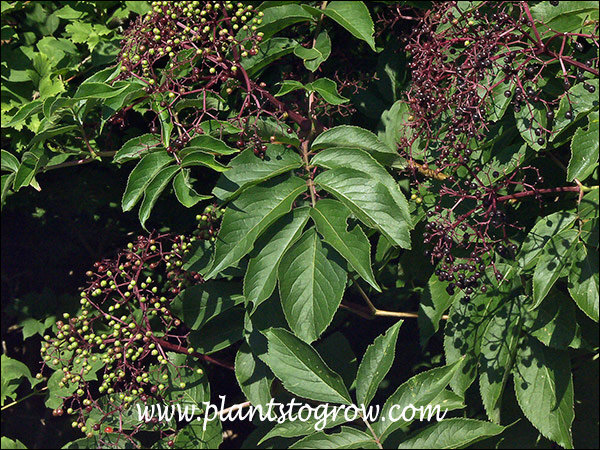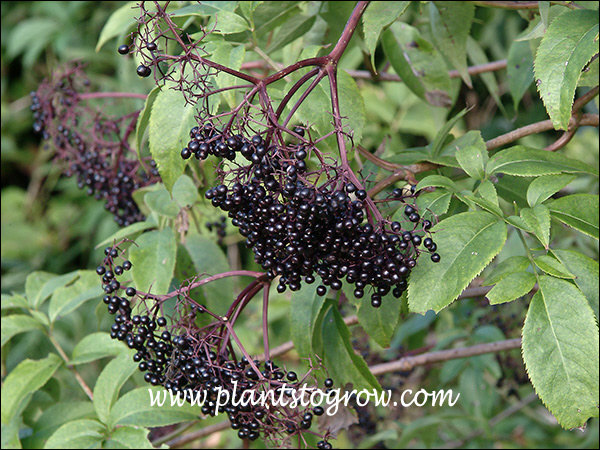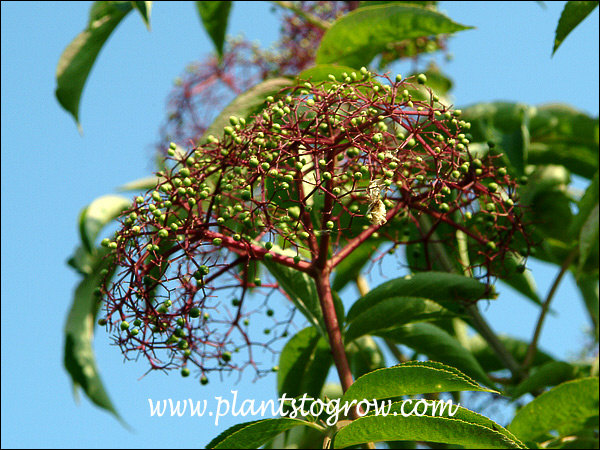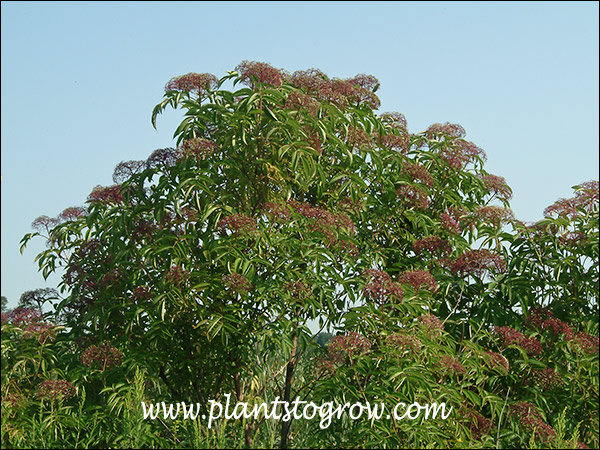| Description | American Elderberry (Sambucus nigra canadensis) A medium size native shrub with white flowers and a plethora of fruit. Likes moist, full sun sites. Images of plants in native sites. |
|---|---|
| Pronunciation | (sam-BOO-kus)(can-AH-den-sis) |
| Plant Type | Shrubs Deciduous |
| Sunlight | full to partial sun |
| Moisture | prefers moist sites but will tolerate average |
| Soil & Site | Found growing in open woodlands, moist areas such as ditches, moist meadows. Can be a shrubby invader of eastern prairies around rivers and floodplains. |
| Flowers | small, white, have a musk fragrance and occur in rather flat topped cymes |
| Fruit | plentiful, small purple drupes, used to make jams, jellies and wine, consumed by birds, also refered to as berry-like drupes |
| Leaves | opposite, pinnately compound, green during the summer and a weak yellow fall color |
| Stems | long straight, hollow stems were used as arrows by native American's, warty lenticels |
| Dimensions | 10-15 plus feet in height by equal spread, forms a medium to large rounded shrub, arches over when the branches are laden with fruit |
| Propagation | seeds |
| Native Site | Native to moist prairies, ditches and along rivers. |
| Misc Facts | Sambucus is derived from the Greek word "sambuca" a string instrument was supposedly made from the wood of the elder. The brewed fruit was used as a laxative, headache medicine and salves of honey and elderberry were used on burns and minor skin problems. AKA: Elderberry, Common Elderberry, Elderberry |
| Notes & Reference | #01-Manual of Woody Landscape Plants (Michael Dirr) , #75-Encyclopedia of Nuts, Berries and Seeds (John Heinerman), #63-How to recognize Shrubs (Grimm) |

Cart






